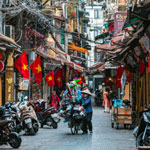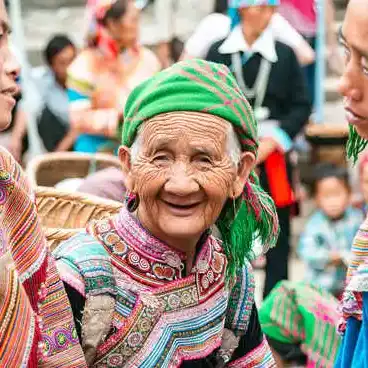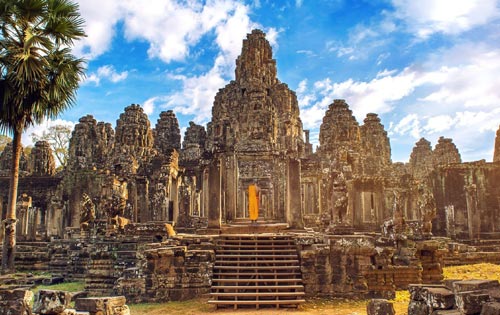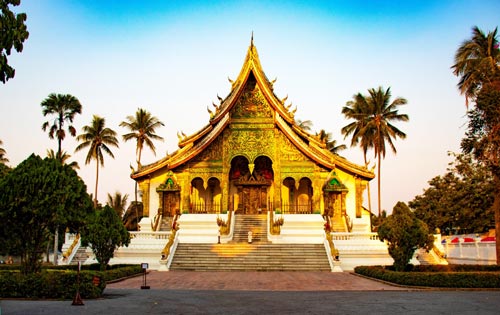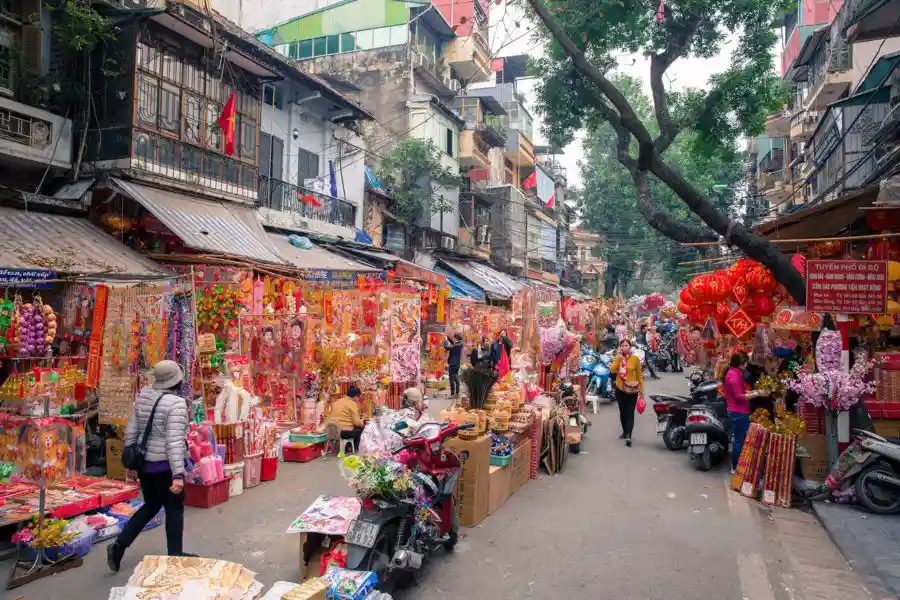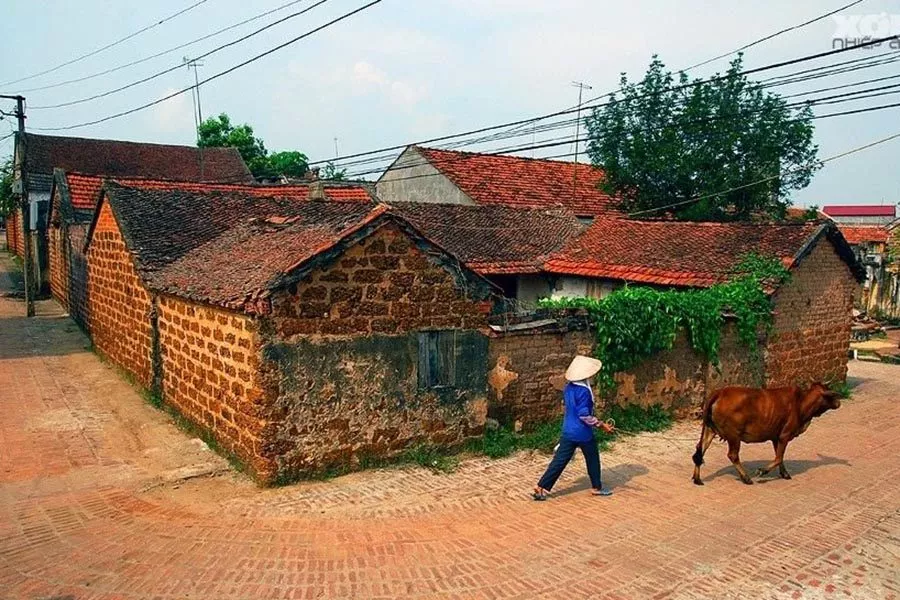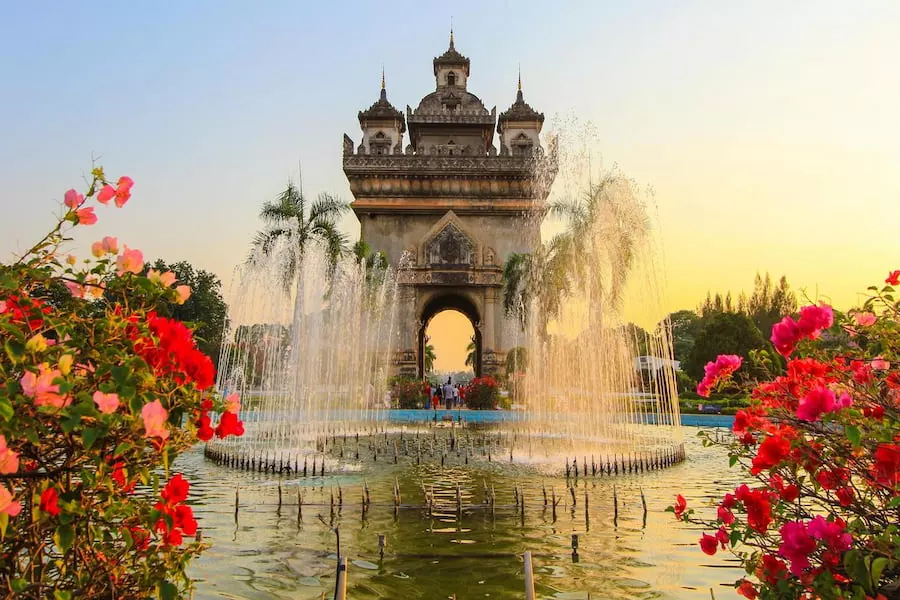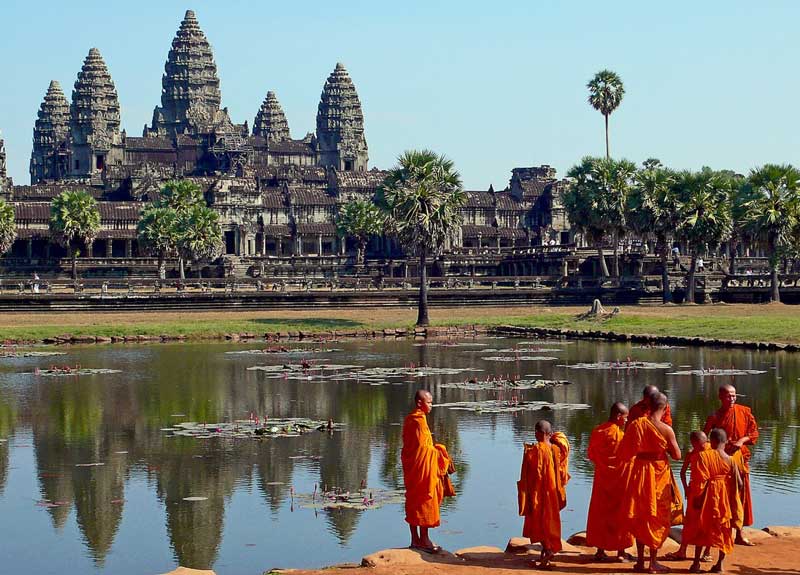Tết, the Lunar New Year in Vietnam, is far more than just the arrival of a new year—it is a rich tapestry of traditions and rituals deeply rooted in Vietnamese culture.
Here’s everything you need to know about this festive season in Vietnam.
The origin of the lunar calendar in Vietnam
While the solar calendar of Roman origin is used in daily life by all Vietnamese, it is the lunisolar calendar that determines the dates of traditional festivals in Vietnam.
This calendar is said to have been created under the Chinese Emperor Huang Di in 2637 BC. Since then, in both China and Vietnam, it has remained the reference for celebrating festivals—most importantly, the New Year.
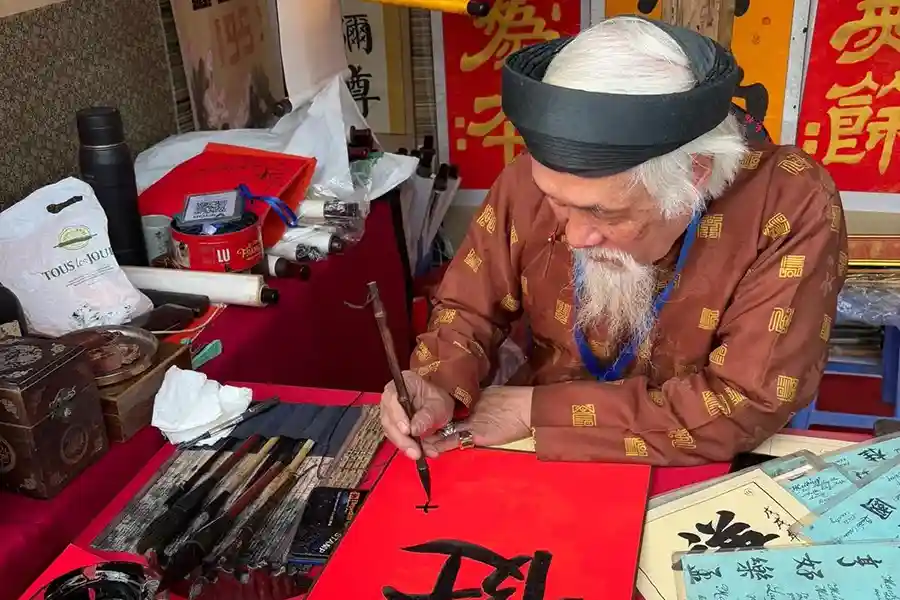
A calligrapher in the streets of Hanoi during the Tết festivities. Photo credit: Mathieu Arnaudet
What is Tết?
Tết marks the arrival of spring, but above all, it is the time to celebrate the lunisolar New Year with family. Vietnamese society remains deeply traditional, and many rituals surround the transition into the new year: every family member helps clean the ancestral home; the family prepares the finest dishes—especially the famous bánh chưng—to present on the ancestors’ altar before sharing them together; elders give lucky money in red envelopes to the younger ones to wish them success, while the younger generation, in turn, offers wishes of good health to their elders.
All these celebrations take place in a festive spirit, especially since Tết also means holidays for everyone in Vietnam—official time off to enjoy the season!
Tết is also a symbol of renewal. During the first days, any rude words or behavior are strictly avoided. Instead, actions should embody harmony and love toward family and others, as they are believed to set the tone for the twelve months ahead.
In the hope of a prosperous year, Vietnamese families carefully choose the first visitor to enter their home on New Year’s Day (xông nhà), ensuring that this person’s zodiac sign is in harmony with the year that is beginning.
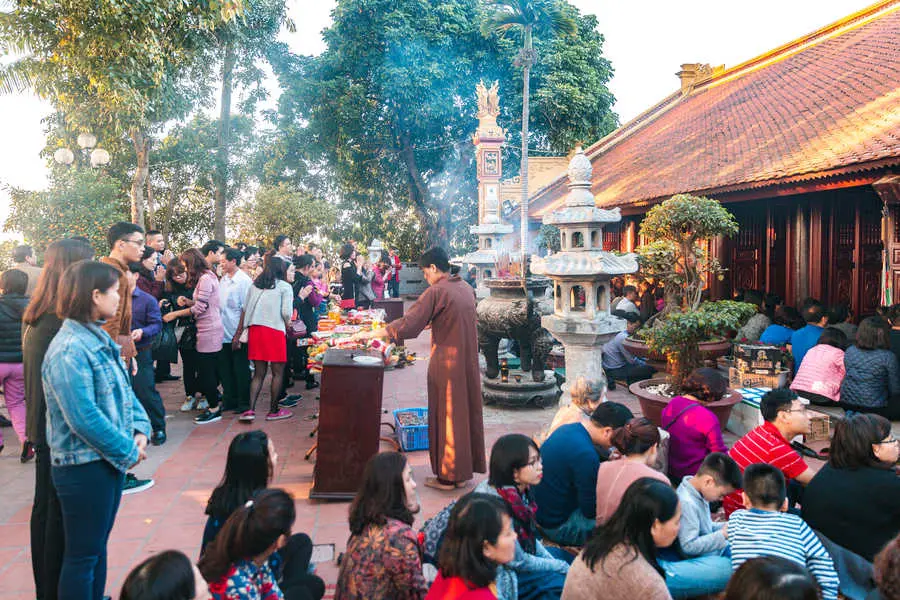
Incense in a pagoda in Vietnam. Photo credit: Mathieu Arnaudet
Tết Festivities
Tết is not just a single celebration but a series of traditional ceremonies that span nearly 10 days. The highlight is, of course, Tết Nguyen Dan—the very first day of the lunisolar year. Let’s take a closer look at the different ceremonies that make up “Tết”:
Táo Quân (Festival of the Kitchen Gods)
This celebration takes place on the 23rd day of the last month of the lunar calendar. It marks the departure of the Kitchen God (Táo Quân) on his journey to Heaven, where he will report to the Jade Emperor. What is the purpose of this six-day mission, lasting until New Year’s Eve? Quite simply, to deliver an account of everything that has happened in the household over the past year. Since this report is believed to influence the family’s fortune in the coming year, great care is taken with the offerings made to him. Among these offerings are… small carp! According to legend, the Kitchen God rode to Heaven on the back of a giant carp. Today, these little carp are released into lakes or rivers after incense has been burned.
Tất Niên (New Year’s Eve celebration)
It is the last day of the year and the ultimate family moment in Vietnamese society. This meal, taken either at noon or in the evening, is called “bữa cơm tất niên” (the year-end meal). On the same evening, before entering the new year, the Vietnamese prepare two offering trays: one for the household ancestors (placed on the ancestral altar) and another in the courtyard, dedicated to Heaven and Earth. This ritual serves to “wash away” the misfortunes of the past year and to welcome the new year with serenity.
Tết Nguyên Đán (Festival of the First Day of the Year)
In the very first moments of the new year, someone specially chosen to bring luck and prosperity steps into the home—often the head of the family! It’s a fun and meaningful tradition full of anticipation. Throughout the day, families dress in their finest clothes and visit relatives and friends, exchanging warm wishes for a happy and prosperous year ahead. Kids and elders alike receive li xi—those iconic red envelopes filled with a little money, a symbol of luck and good fortune for the year to come.
During the first three days of the new year, Vietnamese families leave offering trays to honor their ancestors. On the fourth and fifth days, they burn incense and votive papers, seen as gifts sent to the ancestors. The seventh day marks the official end of the Tết celebrations. It’s then that families take down the Cây Nêu—a bamboo pole decorated with charms meant to ward off evil spirits—signaling the close of the festivities and welcoming the new year in the best possible way.
Tết Symbols
Red Envelopes (lì xì)
Known as bao lì xì in Vietnamese, these red envelopes are given to children and close family members on the first day of the Lunar New Year. Inside, you’ll find a small amount of money along with heartfelt wishes for the year ahead.
Red is the color of luck, which is why it’s also the color of bridal dresses and the traditional outfits children wear during Tết. The money inside the envelope is often chosen as a lucky number, adding an extra touch of good fortune.
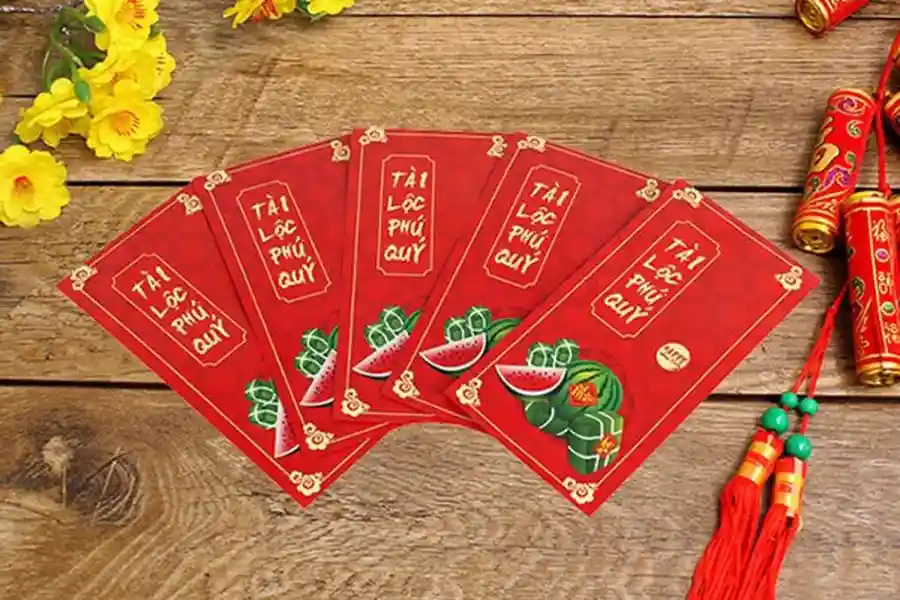
Red envelopes for sale on Hang Ma Street, Hanoi, Vietnam
Tết Flowers
Flowers also play a central role in welcoming the Lunar New Year in Vietnam. They symbolize joy and are believed to bring happiness to the household throughout the coming year, which is why every family displays a flowering tree in their home during Tết.
Two flowers are especially prominent: the peach blossom in northern Vietnam and the apricot blossom in the south.
The peach blossom, with its deep pink petals, thrives in a temperate climate and represents luck and prosperity. Legend has it that its gentle beauty reflects the charm of young Vietnamese women.
The apricot blossom, bright yellow and radiant, brings serenity to the home. It symbolizes peace and longevity, as this shrub can live for decades, even centuries.
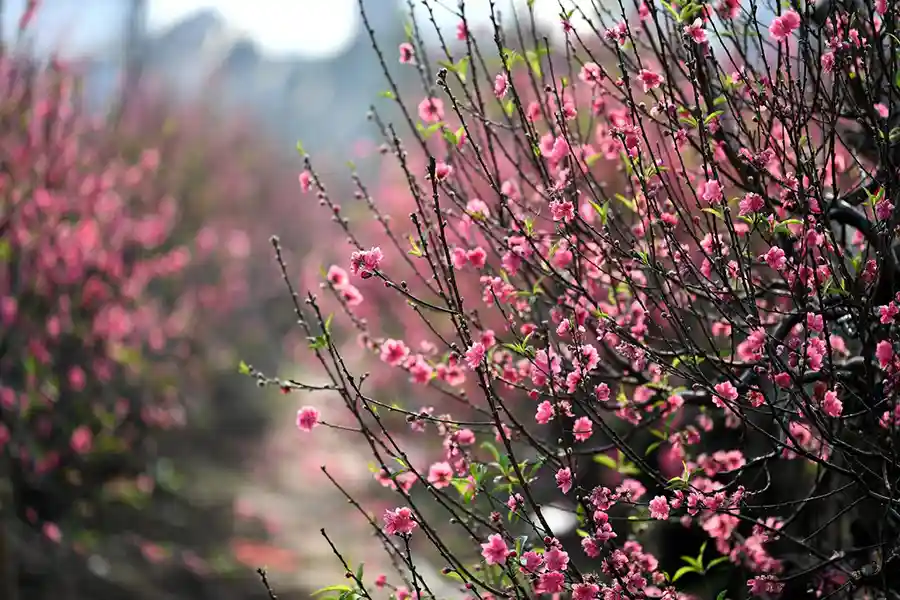
Peach blossoms for sale on the streets of Hanoi, Vietnam
Another tree commonly displayed during Tết is the kumquat tree, which bears small orange fruits. It is also a symbol of prosperity and good fortune.
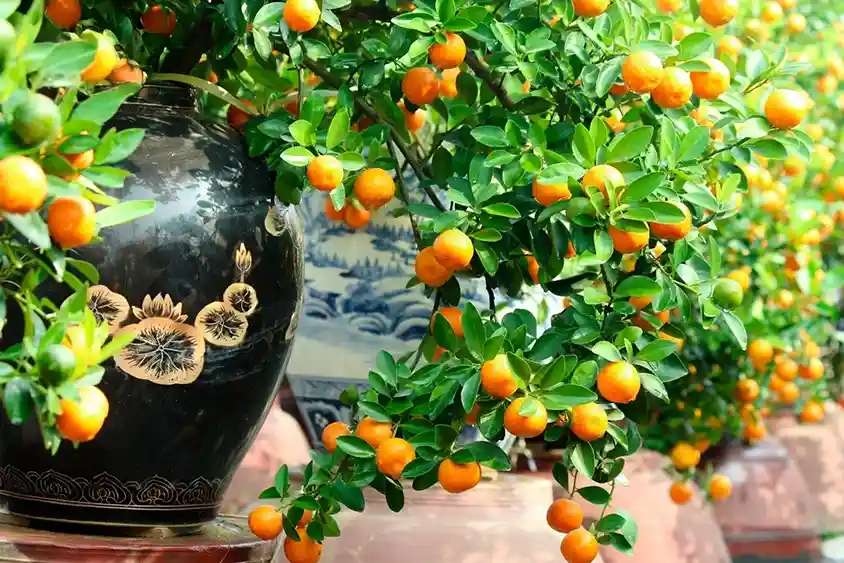
Kumquats for sale on the streets of Hanoi, Vietnam
Bánh Chưng
This is the quintessential Tết cake! According to legend, Prince Lieu won a culinary contest organized by King Hung, which ultimately led him to ascend the throne as the seventh King Hun
Square in shape, bánh chưng is prepared in the days leading up to the Lunar New Year. Its main ingredients are dongleaves, glutinous rice, mung beans, and pork belly.
Recipes vary from region to region, and every family has its own secret touch. In some areas, it may take a cylindrical form (bánh tét, a symbol of fertility) or include flavors like pandan, pepper, or coconut juice—particularly in southern Vietnam. Some variations feature pickled onions, preserved vegetables, or Vietnamese mortadella.
After preparation, bánh chưng pairs are placed on the ancestral altar, while the remainder is often shared with other families. Even though you can find it year-round today, enjoying it remains a tradition closely tied to Tết celebrations.
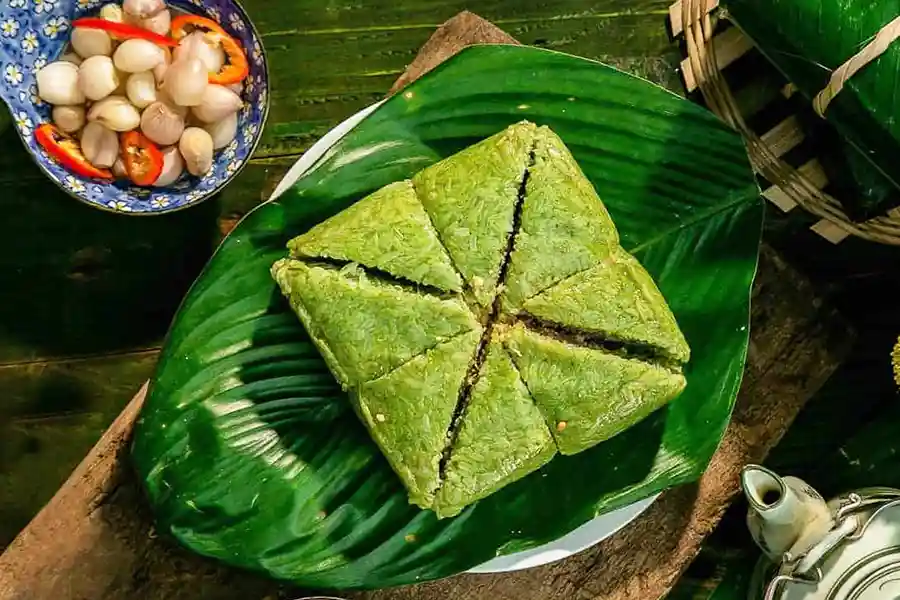
Bánh chưng at the center of the festive table during Tết in Vietnam
Ancestor Worship
Vietnamese Tết is, above all, a family celebration that never forgets to include ancestors. Families carefully prepare offerings and place them on the ancestral altar as a gesture of gratitude for the guidance and protection shown by their ancestors and household spirits throughout the past year.
By lighting incense sticks, the Vietnamese devoutly invite their ancestors to return home and spend a few moments with the family. The rising smoke serves as a bridge between the earthly world and the beyond.
Now that you’ve learned so much about this traditional celebration, let’s talk travel!
Traveling to Vietnam During Tết
If your trip to Vietnam happens to coincide with Tết, here are a few tips to help you make the most of it:
Expect many shops to be closed
As we’ve seen, Tết is a holiday period for the Vietnamese. Many city dwellers return to their families in the countryside during this time, which means you may find cities unusually quiet and many storefronts closed. This applies not only to shops but also to some tourist attractions. We recommend enjoying the calm at the beach during the first three days of Tết!
Book your transportation in advance
Since most Vietnamese travel to their families a few days before Tết, transportation—whether by plane, bus, or train—tends to fill up quickly. If you plan to travel in the days leading up to Tết, it’s best to book your tickets well in advance (2 to 3 months ahead).
Be cautious before Tết
In the weeks and days leading up to Tết, be mindful of your belongings. The holiday season is a time for gift-giving, and some people may be in need. Stay vigilant and take only what’s necessary when moving around in larger cities.
With these tips, you’re now fully prepared to understand and enjoy Vietnam’s Lunar New Year festivities.
Wishing you a wonderful Tết and a very happy New Year!






